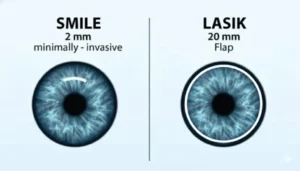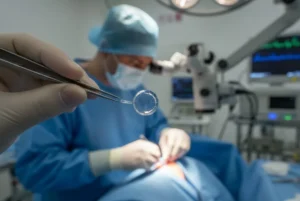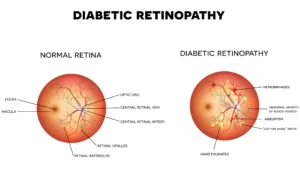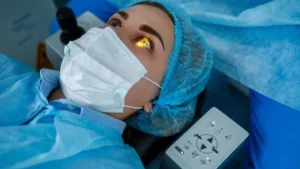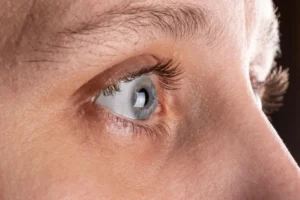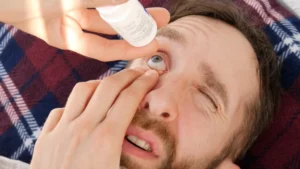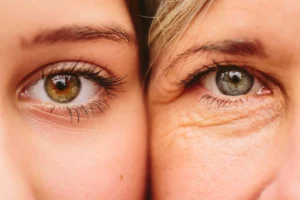Blepharoplasty, commonly known as eyelid surgery, is a sophisticated cosmetic procedure designed to rejuvenate the appearance of the eyes. As a focal point of facial aesthetics, the eyes significantly influence overall perception of youthfulness and vitality. With age, gravity, sun exposure, and genetic factors contribute to the stretching of eyelid skin, weakening of muscles, and protrusion of fat, leading to a tired or aged appearance. Blepharoplasty addresses these concerns by removing excess skin, fat, and muscle from both the upper and lower eyelids, providing a refreshed and more alert look. This article will meticulously explore the intricacies of blepharoplasty, highlighting why Turkey has emerged as a premier destination for individuals seeking this transformative procedure, particularly for patients from the United Kingdom. We will delve into the procedural details, the benefits, potential risks, and a comparative analysis of seeking treatment in Turkey versus the UK, underpinned by authoritative insights and professional recommendations.
Understanding Blepharoplasty: The Procedure
Blepharoplasty is a highly personalized surgical procedure tailored to the unique anatomical needs and aesthetic goals of each patient. It can be performed on the upper eyelids, lower eyelids, or both, depending on the specific concerns. The procedure is typically performed under local anesthesia with sedation, though general anesthesia may be used in some cases. The duration usually ranges from one to three hours.
Upper Eyelid Blepharoplasty
Upper eyelid surgery targets sagging skin that can create folds or disturb the natural contour of the upper eyelid, sometimes impairing vision. The surgeon makes an incision along the natural crease of the upper eyelid. Through this incision, excess skin, fat, and occasionally a small strip of muscle are carefully removed. The remaining skin is then meticulously redraped and secured, resulting in a smoother, firmer eyelid and a more open eye appearance. The incisions are strategically placed to ensure that scars are hidden within the natural folds of the eyelid, making them virtually imperceptible once healed.
Lower Eyelid Blepharoplasty
Lower eyelid surgery focuses on reducing puffiness, dark circles, and wrinkles below the eyes. There are two primary techniques for lower blepharoplasty:
- Transconjunctival Blepharoplasty: This approach involves an incision made inside the lower eyelid, leaving no external visible scar. It is primarily used to remove or reposition excess fat that causes under-eye bags, often suitable for younger patients with good skin elasticity.
- Transcutaneous Blepharoplasty: For patients with significant excess skin and wrinkles in addition to fat pockets, an incision is made just below the lash line. Through this external incision, excess skin, fat, and muscle are removed. The skin is then tightened and smoothed, and the incision is closed with fine sutures. This technique effectively addresses more pronounced signs of aging in the lower eyelids.
Benefits and Expected Outcomes
The primary benefit of blepharoplasty is a significantly rejuvenated and more youthful appearance of the eyes and surrounding facial area. Patients often report looking more rested, alert, and vibrant. Specific improvements include the reduction or elimination of:
- Sagging or drooping upper eyelids that can sometimes obstruct vision.
- Excess skin and fine wrinkles of the lower eyelid.
- Puffiness under the eyes caused by fatty deposits.
- Dark circles beneath the eyes, often exacerbated by shadowing from pronounced under-eye bags.
Beyond aesthetic enhancements, some patients experience improved peripheral vision, especially those whose upper eyelid skin significantly obscured their field of view. The results of blepharoplasty are generally long-lasting, often providing a refreshed look for many years.
The Turkish Advantage: Why Patients Choose Turkey for Blepharoplasty
Turkey has rapidly solidified its reputation as a global leader in medical tourism, attracting thousands of international patients annually for a wide array of procedures, including plastic surgery. For patients from the UK considering Blepharoplasty In Turkey, several compelling factors underscore this choice.
Unparalleled Expertise and Advanced Facilities
Turkish plastic surgeons undergo rigorous training and possess extensive experience in performing blepharoplasty procedures. Many are internationally recognized, often members of prestigious global surgical associations, and are adept at utilizing the latest techniques and technologies. Hospitals and clinics catering to international patients are equipped with state-of-the-art medical technology, adhering to stringent international safety and hygiene standards. These facilities rival, and often surpass, those found in many Western countries.
Significant Cost-Effectiveness
One of the most attractive aspects of undergoing blepharoplasty in Turkey is the remarkable cost savings without compromising on quality. The cost of medical procedures in Turkey is substantially lower than in the UK, primarily due to lower operating costs, favorable exchange rates, and a competitive medical market. This allows patients to access premium care at a fraction of the price they would pay domestically. For a detailed overview of various Plastic Surgery in Turkey procedures and their cost-effectiveness, further information is available.
| Service/Item | Turkey Price (GBP) | UK Price (GBP) |
|---|---|---|
| Upper Blepharoplasty | £2,000 – £2,500 | £3,000 – £5,000 |
| Lower Blepharoplasty | £2,500 – £3,000 | £4,000 – £6,500 |
| Four-Lid Blepharoplasty | £3,500 – £4,500 | £6,000 – £9,000 |
| Transconjunctival Blepharoplasty | £2,500 – £3,000 | £4,500 – £7,000 |
| Blepharoplasty + Brow Lift | £4,000 – £5,500 | £7,000 – £10,000 |
Reduced Wait Times and Comprehensive Packages
In contrast to the National Health Service (NHS) in the UK, where waiting lists for non-essential cosmetic procedures can be protracted, Turkey offers immediate access to consultations and surgery. Many clinics provide all-inclusive packages that encompass airport transfers, accommodation, post-operative care, and translator services, ensuring a seamless and stress-free experience for international patients.
The Allure of a Recovery Destination
Turkey, and particularly coastal cities like Antalya, offers an appealing environment for post-operative recovery. The serene climate and picturesque surroundings provide an ideal backdrop for rest and recuperation, allowing patients to combine their medical treatment with a relaxing holiday. This dual benefit significantly enhances the overall patient experience and contributes positively to the healing process.
Preparing for Your Blepharoplasty
Careful preparation is crucial for a successful blepharoplasty outcome. Patients will undergo a thorough consultation with their surgeon to discuss medical history, current medications, aesthetic goals, and potential risks. Key preparatory steps include:
- Medical Evaluation: Undergo a comprehensive medical examination, including blood tests and possibly an electrocardiogram, to ensure you are a suitable candidate for surgery.
- Medication Review: Disclose all medications, supplements, and herbal remedies. Your surgeon may advise you to stop certain medications, especially blood thinners like aspirin, ibuprofen, and specific herbal supplements, several weeks before surgery to minimize bleeding risks.
- Smoking Cessation: If you smoke, you will be advised to stop several weeks prior to surgery. Smoking impairs healing and significantly increases the risk of complications.
- Alcohol Restriction: Avoid alcohol consumption for at least a week before surgery.
- Arrange for Support: Ensure you have someone to drive you home after the procedure and assist you during the initial recovery period.
- Eye Health Assessment: An ophthalmologist may perform an eye exam to assess tear production and vision, especially for patients with pre-existing dry eye conditions.
Recovery and Post-Operative Care
The recovery period following blepharoplasty is typically manageable, with most patients experiencing mild to moderate discomfort that can be controlled with prescribed pain medication. Key aspects of post-operative care include:
Immediate Post-Operative Period
Immediately after surgery, patients may experience swelling, bruising, and some discomfort around the eyes. Cold compresses are highly recommended to reduce swelling and bruising. The surgeon will provide specific instructions for cleaning the incision sites and applying any prescribed ophthalmic ointments.
Recovery Timeline
- Days 1-7: Swelling and bruising will be most pronounced during this initial week. It is crucial to rest, keep the head elevated, and avoid strenuous activities. Stitches are typically removed within 5-7 days for external incisions.
- Weeks 2-4: Most significant bruising and swelling will subside, though minor residual swelling may persist. Patients can generally resume light activities and return to work, provided their job does not involve heavy lifting or strenuous exertion. Vision may be temporarily blurry or light-sensitive.
- Months 1-3: Residual swelling continues to diminish, and the incision lines will start to fade. The full aesthetic results of the surgery begin to become apparent. Patients can typically resume all normal activities, including exercise.
- Month 6 and Beyond: Final results are typically visible by six months. Scars will continue to mature and become less noticeable over time.
Throughout the recovery, it is imperative to protect the eyes from sun and wind using sunglasses, and to strictly follow all post-operative instructions provided by the surgical team.
Potential Risks and Complications
While blepharoplasty is generally considered safe when performed by a qualified and experienced surgeon, as with any surgical procedure, there are potential risks. These include, but are not limited to:
- Infection: Though rare, infection at the incision sites is a possibility.
- Bleeding: Excessive bleeding or hematoma formation.
- Dry Eyes: Temporary or, in rare cases, persistent dry eye syndrome.
- Difficulty Closing Eyes: Temporary difficulty in fully closing the eyelids, which usually resolves as swelling subsides.
- Asymmetry: Minor asymmetry in eyelid appearance.
- Scarring: While incisions are strategically placed to minimize visibility, scarring is inherent to surgery.
- Vision Changes: Extremely rare complications include temporary vision changes or, in very rare instances, permanent vision loss.
According to a comprehensive review by Ghafouri et al. (2019) published in the Journal of Ophthalmic & Vision Research, long-term patient satisfaction rates after both upper and lower eyelid blepharoplasty exceed 90%, with a low incidence of serious complications when procedures are performed by experienced practitioners. This underscores the importance of choosing a highly skilled and reputable surgeon to mitigate potential risks and ensure optimal outcomes.
Choosing Your Surgeon and Clinic in Turkey
Selecting the right surgeon and clinic is paramount for a successful blepharoplasty journey. When considering options in Turkey, prospective patients should prioritize:
Board Certification and Experience
Ensure the surgeon is board-certified in plastic surgery and has extensive experience specifically with blepharoplasty procedures. Inquire about the number of procedures they perform annually and ask to see before-and-after photos of their previous patients.
Clinic Accreditation
Verify that the clinic or hospital holds international accreditations, such as those from the Joint Commission International (JCI), which signifies adherence to global standards for patient safety and quality of care.
Communication and Support
Effective communication with the medical team, including the surgeon and support staff, is vital. Look for clinics that offer excellent patient coordination, clear pre- and post-operative instructions, and readily available English-speaking staff or translators.
CK Health Turkey: Your Partner for Blepharoplasty
At CK Health Turkey, we understand the importance of entrusting your health and aesthetic aspirations to skilled professionals. We pride ourselves on connecting international patients, particularly from the UK, with Turkey’s leading plastic surgeons and state-of-the-art medical facilities. Our commitment is to provide a seamless, safe, and highly effective medical travel experience for blepharoplasty. Our network of accredited clinics and experienced surgeons ensures that every patient receives personalized care tailored to their individual needs, delivering natural-looking, rejuvenating results.
We facilitate comprehensive packages that cover all aspects of your medical journey, from initial consultation and treatment to post-operative follow-up and accommodation. Our patient coordinators are dedicated to supporting you every step of the way, providing clarity and peace of mind. Choosing CK Health Turkey means opting for world-class medical expertise, exceptional value, and a supportive environment for your recovery. We invite you to explore the possibilities of achieving your aesthetic goals with us.
Get in touch with CK Health Turkey today for a personalized consultation or visit our website to learn more about how we can facilitate your blepharoplasty journey.
Comparison: Turkey vs. United Kingdom for Blepharoplasty
| Factor | Turkey | United Kingdom |
|---|---|---|
| Cost | Significantly lower, typically 50-70% less | Higher, reflecting higher operating costs |
| Surgeon Expertise | High, many internationally recognized surgeons | High, regulated by GMC |
| Technology & Facilities | State-of-the-art, JCI accredited hospitals | Excellent, NHS and private options |
| Wait Times | Minimal to no waiting lists | Can be significant for cosmetic procedures |
| Recovery Environment | Opportunity for a relaxing recovery holiday | Typically involves returning home for recovery |
| Travel & Logistics | All-inclusive packages often available | Requires self-arrangement of logistics |
| Patient Focus | Strong emphasis on international patient services | Primarily caters to domestic patients |
Blepharoplasty in Turkey offers a compelling proposition for individuals seeking significant aesthetic rejuvenation of the eyes. The combination of highly skilled surgeons, advanced medical infrastructure, substantial cost savings, and the appeal of a favorable recovery environment positions Turkey as an attractive destination for medical tourists from the UK and beyond. Through diligent research and careful selection of a reputable provider like CK Health Turkey, patients can confidently pursue their desired outcomes, achieving a refreshed, more youthful appearance with the assurance of world-class care.
FAQs
What is the typical recovery time for blepharoplasty?
The initial recovery, with most swelling and bruising subsiding, typically takes 1-2 weeks. Full recovery and final results can be observed over several months as minor swelling resolves and scars mature.
Are the results of blepharoplasty permanent?
Blepharoplasty results are long-lasting, often for 10-15 years or more. While the procedure addresses existing issues, it does not stop the natural aging process. However, patients will continue to look younger than if they had not had the surgery.
Will blepharoplasty leave noticeable scars?
For upper eyelid surgery, incisions are hidden within the natural crease, making them virtually invisible once healed. For lower eyelid surgery, incisions are either inside the eyelid (transconjunctival) or just below the lash line, also designed to be inconspicuous.
Is blepharoplasty painful?
During the procedure, local anesthesia ensures you feel no pain. Post-operatively, patients typically experience mild to moderate discomfort, which is well-managed with prescribed pain medication. Significant pain is rare.
Can I combine blepharoplasty with other procedures?
Yes, blepharoplasty is frequently combined with other facial rejuvenation procedures such as a brow lift, face lift, or laser skin resurfacing for a more comprehensive aesthetic improvement. Your surgeon will discuss suitable combinations during your consultation.
What are the contraindications for blepharoplasty?
Contraindications may include severe dry eye syndrome, uncontrolled glaucoma, retinal detachment, uncontrolled high blood pressure, thyroid disorders (like Graves’ disease), and certain bleeding disorders. A thorough medical evaluation will determine your suitability.
How soon can I fly after blepharoplasty?
Most surgeons recommend waiting at least 5-7 days after surgery before flying, to allow initial healing and for any stitches to be removed. It’s important to consult with your surgeon for their specific recommendation based on your individual recovery.
How do I choose the right surgeon in Turkey?
Look for a board-certified plastic surgeon with extensive experience in blepharoplasty, international accreditations for the clinic, and transparent communication. Requesting before-and-after photos and patient testimonials is also advised.
Blepharoplasty in Turkey offers a compelling proposition for individuals seeking significant aesthetic rejuvenation of the eyes. The combination of highly skilled surgeons, advanced medical infrastructure, substantial cost savings, and the appeal of a favorable recovery environment positions Turkey as an attractive destination for medical tourists from the UK and beyond. Through diligent research and careful selection of a reputable provider like CK Health Turkey, patients can confidently pursue their desired outcomes, achieving a refreshed, more youthful appearance with the assurance of world-class care.
DEBUG: Used 3 links from context: https://ckhealthturkey.com/treatments/plastic-surgery-turkey/blepharoplasty/, https://ckhealthturkey.com/treatments/plastic-surgery-turkey/, https://ckhealthturkey.com/antalya/




